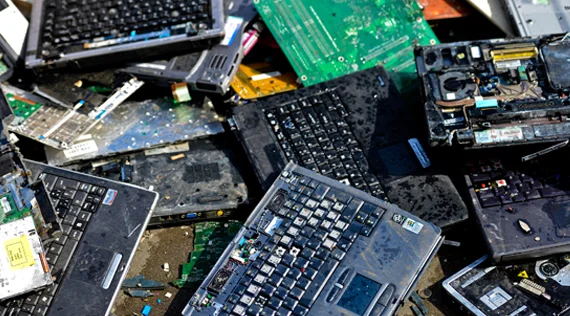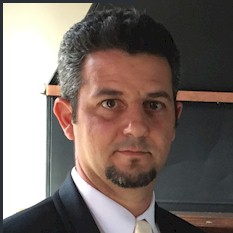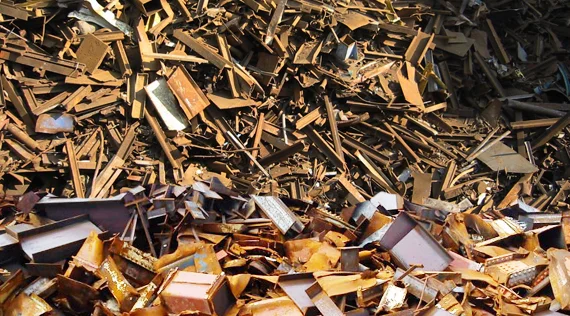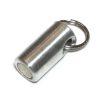The Tragic Cost of E-Waste and New Efforts to Recycle
E-waste Recycling | 2023-11-27 12:18:36
The battery is not glued in, making it simple and inexpensive to recycle or replace. It's the same for the camera lens and screen.

SEATTLE (Scrap Monster): We think a lot about where products come from when we buy them, less so about where they go when we're finished. When we throw things away, this is "away": mountains of garbage across acres of land, with tens of thousands of people sifting through it, in places like the African nation of Ghana.
It is not the kind of image we see in the glossy advertisements enticing us to buy a new cell phone, laptop or TV, but they should be part of the picture, because this is where many of our electronics wind up.
It's also home for Mohammed Awal, who supports his mother and four kids by working, despite the risks of injury, in this city of waste in Ghana's capital, Accra. This dangerous, difficult and dirty work is called "urban mining" – extracting something usable (like copper wiring) from the world's discarded electronics.
They do it because there's treasure here, recovered, in some cases, by sawing a monitor's circuit board. Incredibly, there's 100 times more gold in a ton of smartphones than in a ton of gold ore. But finding it comes with a real cost. It's hazardous work, and safety equipment is not exactly standard.
Children as young as 10 toil and sometimes live amid this toxic garbage, desperate for a meager payday. "These places wouldn't exist without the demand for the materials they extract," said Muntaka Chasant, who has been documenting the lives of those living on the margins.
Abdullah Illias endures the sweltering heat to pluck out tiny pieces of copper, for which he might get three dollars.
The U.N. figures we produce around 50 million tons of electronic waste (or "e-waste") every year, and this is not what's supposed to happen to it. Only 20 percent is formally recycled; the vast majority winds up in landfills, or is dealt with informally.
At this landfill, what cannot be pried out is often burned to extract minerals. Chasant said, "One of the ramifications of this is lead exposure among urban poor children."
But he urged us to see this place with nuance – the reality is a murky, polluted gray because, Chasant said, "E-waste provides opportunities for upward social mobility."
"You're saying you can't just look at this as all bad because this is creating jobs?" asked Doane.
"Absolutely."
"But this is also dangerous, polluting the environment?"
"We've been having this same conversation for more than a decade now, and absolutely nothing has changed," Chasant said.
During the interview, someone nearby started yet another fire. "This is what people in Accra have been living with," Chasant said.
And not far away was the largest open food market in the city.
Anita Asamoah, an environmental chemist at Ghana's Atomic Energy Commission, has seen the smoke wafting over homes and food markets, and she wondered whether those toxins were so pervasive that they were even getting into the breastmilk of mothers.
"When you burn, a lot of chemicals are released – poisonous chemicals," she said.
What she found when she examined breast milk was PCBs. "These are poisonous substances which can result in death, which can result in diseases like cancers," she said. "And infants are even more susceptible to these chemicals.
"I'm a mother myself, and I wouldn't want to give poisonous substances to my baby," said Asamoah.
These burdens are the consequence of consumption in a much richer West. Bas van Abel, a Dutch activist-turned-entrepreneur, decries the short life spans of products ending up in landfills, and argues producers need to consider a product's "end of life" when designing it. "Right now we're incentivized to throw away stuff, because it's cheaper to buy a new one than actually have it repaired," he said.
Van Abel's investigations into mining practices lead him to start a company called Fairphone. Its aim is to create a more sustainable phone and cut down on waste. "Unfortunately, phones and electronics are designed in a way that you can't really reuse components in parts of it," he said. "So, what happens is that this whole product, basically, goes into the oven and you burn it and you get minerals out of it. It's a very stupid process. It's kind of stupid to put something in an incinerator that [one] puts so much effort into making. Most of the footprint of a phone is in the making of it. So, the best thing is to keep it as long as possible."
He likens his Fairphone to Lego, because of its removable, modular parts. The battery is not glued in, making it simple and inexpensive to recycle or replace. It's the same for the camera lens and screen.
Fairphone, which just launched in the U.S. and sells for up to $700 a piece, has half a million customers worldwide – proof of concept, they say. Americans on average upgrade their cell phone every two-and-a-half years; Fairphones are under warranty for five.
Van Abel said, "If you use your phone twice as long, you need to produce only half the amount of phones, and you have half the amount of electronic waste. It's a very simple calculation."
Courtesy: www.cbsnews.com
 By
By 



